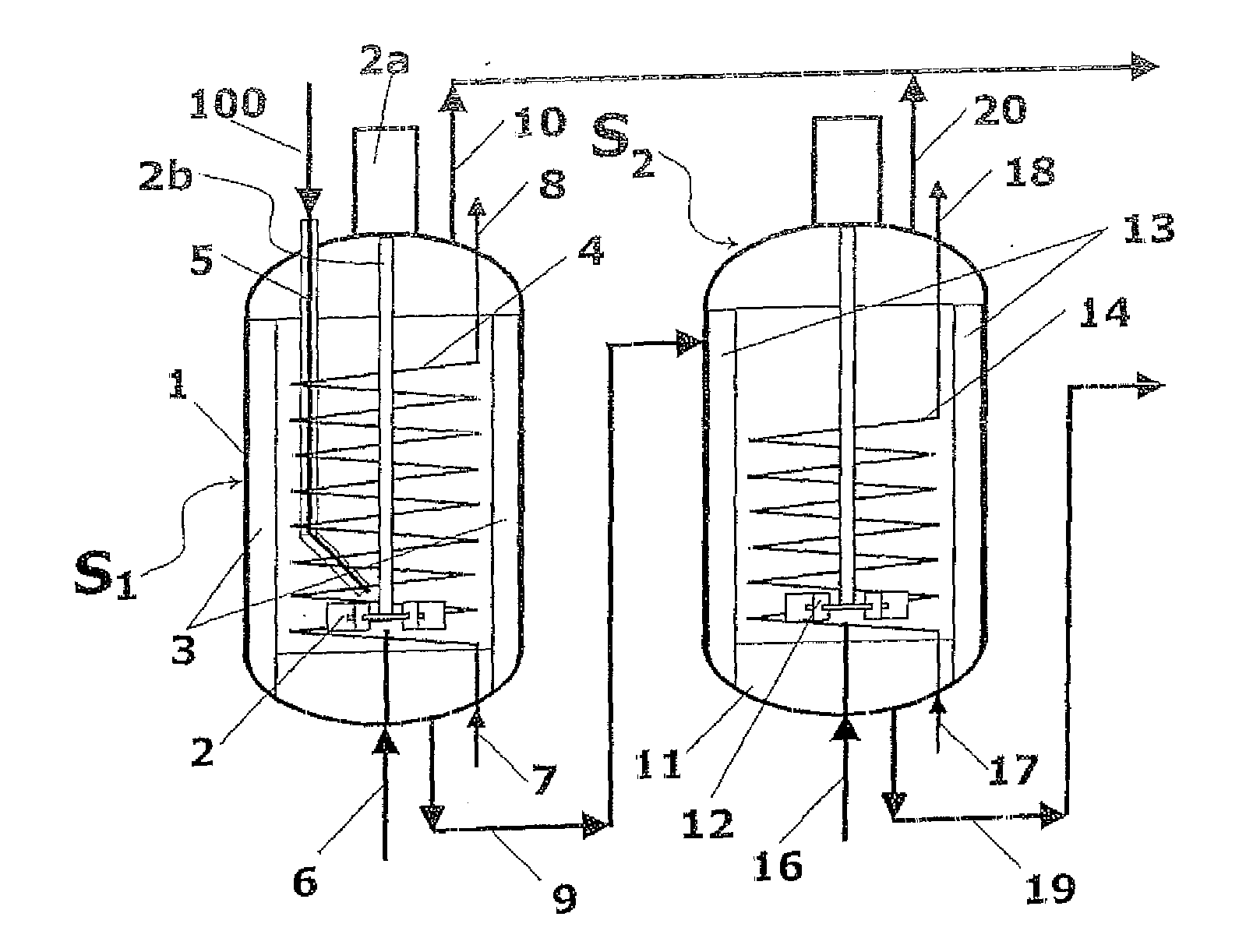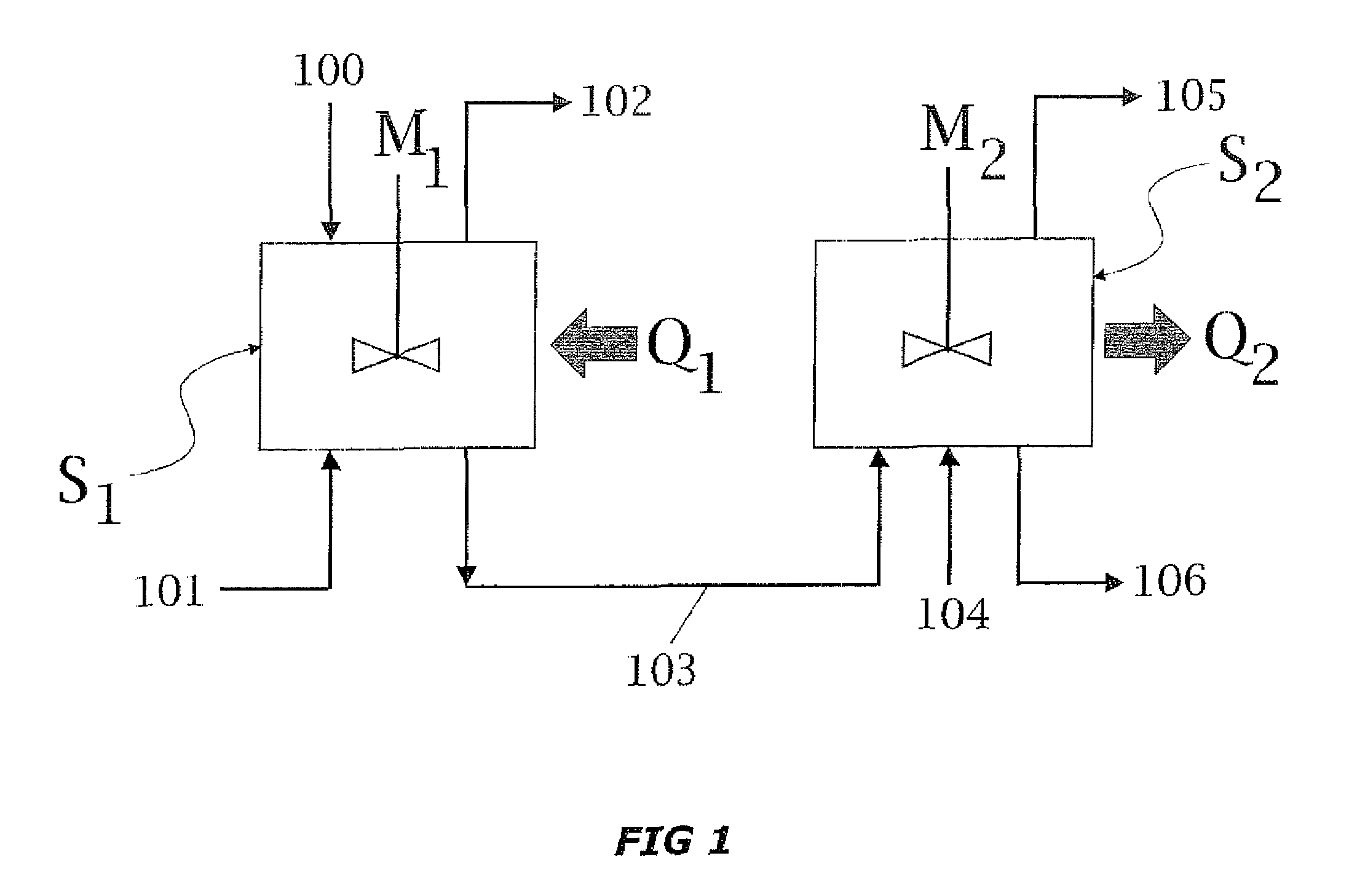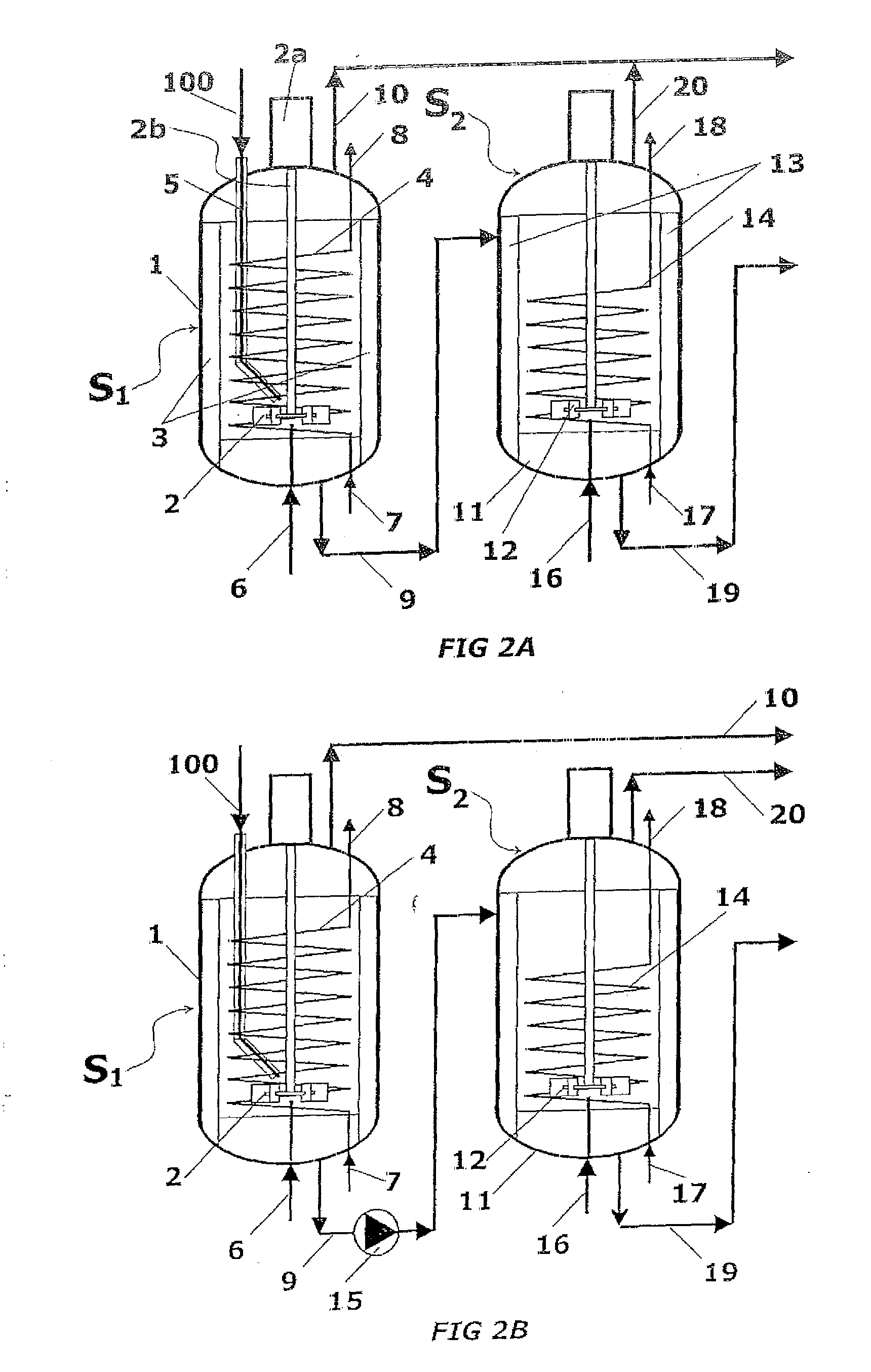Process for Producing High-Quality Melamine from Urea
- Summary
- Abstract
- Description
- Claims
- Application Information
AI Technical Summary
Benefits of technology
Problems solved by technology
Method used
Image
Examples
first embodiment
[0061]Referring to FIG. 2A, reaction zones S1 and S2 are obtained with a first stirred vessel 1 and a second stirred vessel 11 connected by a melamine melt line 9. Molten urea feed 100 is introduced via urea duct 5 into the first vessel 1. Further ammonia (streams 101, 104 of FIG. 1) is added via lines 6 and 16 to the liquid phase in both vessels 1 and 11. Gaseous products, mainly comprising ammonia and CO2, are collected at lines 10 and 20, respectively. Melamine melt is obtained at line 19, i.e. at the output of the second vessel 11.
[0062]The vessel 1 is provided with a mechanical impeller 2, and vertical baffles 3 to maintain agitation of the liquid phase. The impeller 2 has a driving motor 2a and a shaft 2b extending inside the vessel 1. Said baffles 3 are appropriate to realize a “fully baffled condition”, where the tangential entrainment of liquid is impeded, and the cylindrically rotating vortex disappears, allowing transfer of a significant deal of power to the liquid under ...
second embodiment
[0075]The process is carried out in a single vessel, in order to compact the equipment and save construction expenses. In particular, the two reaction stages are operated inside two compartments C1 and C2 of a single, horizontal pressure vessel 21. The two compartments C1 and C2 correspond to reaction zones 51 and S2; they may differ in volume, although having the same cross section, by occupying a different length of the horizontal vessel 21. A baffle 22 separates the two compartments, while not closing completely the cross section of the vessel 21 and leaving a relatively small bottom passage 26.
[0076]For the sake of simplicity, items equivalent to those of the first embodiment of FIGS. 2A and 2B are indicated with the same numerals. Each compartment C1, C2 is provided with a mechanical agitator, respectively 2 and 12. Each compartment is also provided with baffles, respectively 3 and 13, to realise the “fully baffled condition” as above described. Heat is supplied to the first co...
third embodiment
[0078]In this embodiment, first and the second reaction zones are obtained with multiple stirred reactors arranged in cascade or in series. The advantage is that, at equality of plant production capacity, the same reaction completion is achieved in a reduced total volume of liquid. The number of vessels in series constituting each stage may be conveniently limited to two or three items.
[0079]Referring to example of FIG. 4, a first stage is formed by vessels 31A, 31B and 31C in cascade, and a second stage is formed by two further vessels 32A and 32B also in cascade. The three vessels 31A to 31C provide the first reaction zone S1 and perform the same process as reactor 1 in FIG. 2A; the two vessels of the second stage provide the second reaction zone S2 and perform the same process as reactor 11 in the same FIG. 2A. The molten urea feed 100 enters the first vessel 31A via a pipe 33, while gaseous ammonia is fed and subdivided to all vessels of the series in 34A, 34B, 34C and, respecti...
PUM
 Login to View More
Login to View More Abstract
Description
Claims
Application Information
 Login to View More
Login to View More - R&D
- Intellectual Property
- Life Sciences
- Materials
- Tech Scout
- Unparalleled Data Quality
- Higher Quality Content
- 60% Fewer Hallucinations
Browse by: Latest US Patents, China's latest patents, Technical Efficacy Thesaurus, Application Domain, Technology Topic, Popular Technical Reports.
© 2025 PatSnap. All rights reserved.Legal|Privacy policy|Modern Slavery Act Transparency Statement|Sitemap|About US| Contact US: help@patsnap.com



